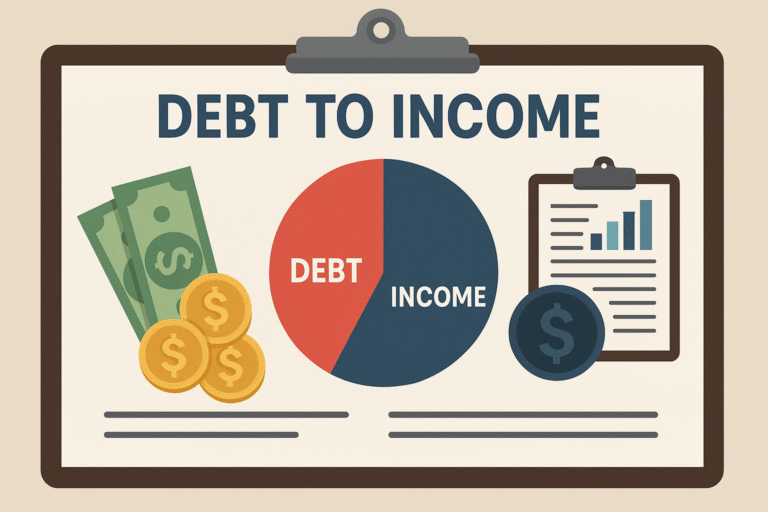Mortgage Calculator
About This Calculator
- This calculator is a helpful guide and estimate tool.
- Select your state to autofill tax & PMI (edit if needed).
- See your full payment (principal, interest, taxes, insurance, PMI, HOA, extras, other costs).
- Making extra payments? See how fast you can pay off your loan and how much you’ll save.
- All costs are itemized for clarity and comparison.
- Mobile-first, high-contrast, modern design for easy reading.
Phase 1: Financial Foundation (6-12 months before)
Credit Score Improvement
Your credit score is one of the most critical factors in securing a favorable conventional loan. Start by pulling your free credit reports from annualcreditreport.com to review all three bureaus (Equifax, Experian, and TransUnion). For conventional loans, you’ll need a minimum score of 620, but aim for 740 or higher to qualify for the best interest rates.
To improve your credit score, focus on these key actions:
• Pay down credit card balances below 30% utilization (ideally under 10%)
• Keep old credit cards open to maintain credit history length
• Dispute any errors on your credit reports immediately
• Set up automatic payments to ensure no late payments
• Avoid applying for new credit during this preparation period
Income and Employment Stability
Lenders want to see stable, predictable income when evaluating your loan application. Ideally, you should have at least two years of employment history in the same field. If you’re considering a job change, try to postpone it until after closing, or ensure the new position is in the same industry with equal or better compensation. Begin organizing your income documentation by keeping all pay stubs, W-2s, and tax returns for the past two years. Self-employed borrowers should prepare profit and loss statements and may need additional documentation.
Phase 2: Savings Strategy (4-6 months before)
Down Payment Planning
Conventional loans offer more flexibility than government-backed loans, with down payment options ranging from 3% to 20% or more. While you can put down as little as 3% with certain conventional loan programs, putting down 20% eliminates the need for private mortgage insurance (PMI), which can save you hundreds monthly. Calculate your target down payment based on your expected home price range and create a dedicated savings account specifically for home purchase funds.
Your savings strategy should include:
• Automating transfers to your down payment fund
• Keeping funds in easily documentable accounts (avoid cash)
• Maintaining paper trails for any large deposits
• Considering high-yield savings accounts for better returns
• Exploring down payment assistance programs in your area
Additional Cost Preparation
Beyond the down payment, you’ll need funds for closing costs (typically 2-5% of the home price), home inspection fees ($300-500), appraisal fees ($400-600), and moving expenses. It’s also wise to maintain an emergency fund separate from your home purchase funds—aim for 3-6 months of future housing payments as a buffer after closing.
Phase 3: Pre-Approval Process (2-3 months before)
Choosing a Lender
Research multiple lenders to compare rates, fees, and service quality. Consider traditional banks, credit unions, online lenders, and mortgage brokers. Each may offer different advantages—credit unions often have lower fees, while online lenders might provide faster processing. Request loan estimates from at least three lenders to compare total costs, not just interest rates.
Documentation Gathering
Organize all required documentation before starting applications to streamline the process:
• Two years of W-2s and tax returns
• 30 days of recent pay stubs
• Two months of bank statements (all pages)
• Investment and retirement account statements
• Driver’s license and Social Security card
• Explanations for any credit issues or employment gaps
Pre-Approval Application
Submit your applications to multiple lenders within a 14-45 day window—credit bureaus count multiple mortgage inquiries as one if done within this timeframe. Be completely honest on applications as lenders will verify everything. Once pre-approved, avoid any major financial changes like large purchases, job changes, or new credit accounts, as these can jeopardize your approval.
Phase 4: House Hunting Preparation (1-2 months before)
Budget Reality Check
Your pre-approval amount represents the maximum you can borrow, not necessarily what you should spend. Create a realistic budget that includes:
• Principal and interest payments
• Property taxes and homeowners insurance
• HOA fees if applicable
• Utilities and maintenance costs
• PMI if putting down less than 20%
Use online calculators to estimate total monthly payments and ensure they fit comfortably within your budget—most experts recommend keeping housing costs under 28% of gross monthly income.
Market Research
Familiarize yourself with your target neighborhoods by researching school districts, commute times, crime statistics, and future development plans. Attend open houses to understand pricing trends and available inventory. This research helps you act quickly when the right property appears, which is crucial in competitive markets.
Phase 5: Final Preparation Steps
Lifestyle Adjustments
In the months leading up to your purchase, practice living on your future housing budget. If your estimated mortgage payment is $2,000 and you currently pay $1,200 in rent, save that extra $800 monthly. This serves dual purposes: building your savings faster and confirming you’re comfortable with the higher payment.
Conventional Loan Advantages to Leverage
Understanding conventional loan benefits helps you maximize your position:
• No upfront mortgage insurance premium (unlike FHA)
• PMI can be removed once you reach 20% equity
• No property condition requirements beyond appraisal
• Higher loan limits in expensive areas
• More flexibility in property types
• Potentially faster closing times
Common Pitfalls to Avoid
Stay vigilant against these typical mistakes that can derail your loan approval:
• Making large purchases before closing (furniture, cars)
• Changing jobs or becoming self-employed
• Co-signing loans for others
• Making large unexplained deposits
• Paying off collections without consulting your lender
• Forgetting to maintain insurance on current property




